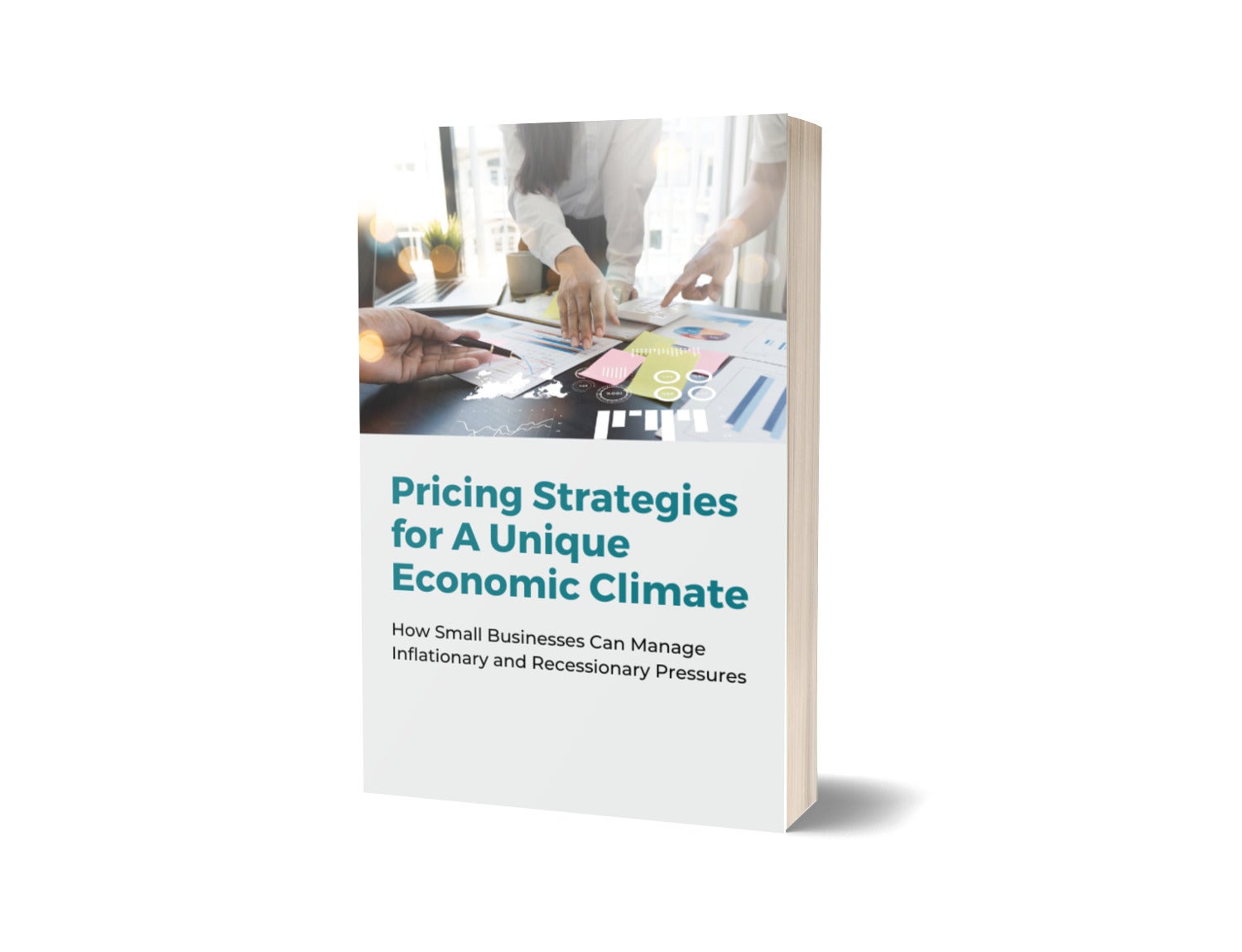
The Power of Pricing: 6 Reasons to Evaluate Your Pricing Strategy
Setting prices for your products or services can be one of the trickiest parts of running a business. With so many factors to consider – like the cost of goods sold, competition, and customer demand – it can be tough to know if you’re pricing your offerings correctly. That’s why evaluating your pricing strategy and adjusting as needed is essential. In our most recent Guide, Pricing Strategies for a Unique Economic Climate, we do a deep dive into how to update and regularly review your pricing strategies.
Here are a few key reasons why your pricing is important:
- You want to boost profitability. Pricing directly impacts your business’s bottom line. Conducting a thorough pricing structure analysis enables you to identify opportunities to increase profitability. Are there any underpriced products or services, leaving money on the table? Conversely, are there areas where prices can be adjusted to improve margins? You can maximize your profits by strategically aligning your pricing with value, demand, and costs without compromising customer satisfaction.
- Your competition has changed. If your industry is constantly evolving, your competitors will likely adjust their pricing strategies as well. Keep an eye on what your competitors charge for similar products or services and make adjustments to stay competitive. If you offer something truly unique, you may be able to charge a premium – but if you’re in a crowded market, you may need to lower prices to stay in the game.
- Customer demand has shifted. The needs and preferences of your customers can change over time, affecting what they’re willing to pay for your offerings. If you’re noticing a decrease in sales or an increase in customers complaining about prices, it may be time to reevaluate your pricing strategy. Consider surveying your customers or conducting market research to understand better what prices they’re willing to pay.
- You’re launching new products or services. Whenever you introduce something new to your lineup, it’s important to think carefully about how it fits into your overall pricing strategy. Will it be a premium offering with a higher price point or a budget option designed to attract new customers? Consider how the new product or service will impact your current prices and profit margins and adjust accordingly.
- It’s been a while since you last looked at prices. Economic factors such as inflation, currency fluctuations, and changes in consumer spending patterns can significantly impact your pricing strategy. Regularly reviewing your pricing allows you to adapt to these changes effectively. By staying informed about economic trends, you can adjust prices accordingly, ensuring your business remains resilient and financially sustainable. Moreover, you can minimize risks and maintain a competitive advantage by proactively managing pricing in response to economic shifts.
By regularly evaluating your prices and making adjustments as needed, you can meet your customers’ needs while achieving your financial goals. Download our free guide that covers six pricing strategies to help your small business navigate the opposing pressures of this unique economic climate.























